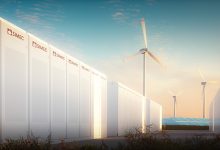Three years after the original Tesla big battery, officially known as the Hornsdale Power Reserve, came into service in South Australia, and Australia’s rule makers and regulators are still trying to figure out the market rules for a technology that wasn’t imagined when the rule-book was drawn up more than two decades ago.
The Hornsdale battery succeeds in causing the Australian and international energy markets – from market operators through to developers and big utilities – to re-imagine the future of the grid thanks to its success in keeping the lights on, saving money for consumers, and delivering handsome returns for its investors.
Already, another half dozen big batteries have entered the market in Australia, another dozen have been committed and dozens more are in the pipeline. But many of them are hampered by the lack of clarity and flexibility around the rules that govern battery storage, and how they can be paired with wind or solar farms, or even operate on a stand alone basis. And the regulators are still trying to figure it out.
The Australian Energy Market Commission this week issued an options paper that canvasses a bunch of different avenues, and will seek feedback on the creation of new energy market participant categories.
The paper that floats a number of options for improving the participation of battery storage technologies within the energy market. Currently, the energy market characterises participants as either energy generators or energy loads, and big batteries are required to register as both, creating a significant level of complexity.
The options paper follows a request from the Australian Energy Market Operator for the electricity market rules to be reformed to provide greater recognition of battery storage technologies participating in the electricity market, as the number of operating examples is set to surge.
Initial comments provided to the AEMC have been broadly supportive of the proposal to recognise the unique capabilities of battery systems, whilst seeking greater clarity over what requirements may be imposed on batteries as market participants.
“Energy storage does not fit well within any of the categories for traditional types of participants in the energy market. As AEMO has recognised, while storage assets most closely resemble a generator in the services they provide to the market, they do not generate electrons – so are not, technically, a generator,” Tesla told the AEMC in its submission.
“A new storage category, whilst evidently not essential, would remove several operational and administrative inefficiencies associated with the current interim arrangements and accelerate the deployment of storage in the NEM.”
The options paper released by the AEMC will also examine how hybrid facilities, which include both energy storage and generation facilities as part of a single project with a single connection point in the energy system, and would be part of a wider set of reforms being considered by the AEMC, and the Energy Security Board, that would progress the creation of a ‘two-sided’ energy market.
“A truly two-sided market would allow all types of consumers to unlock value from their distributed energy resources (like solar and batteries) or from shifting their energy use. For example, this could mean households letting set and forget devices consume power when prices are cheap and export it when this is more lucrative,” the AEMC said in a statement.
AEMO has proposed the creation of a new category of market participant, dubbed a ‘bi-directional resource provider’, which would marry together the ability for battery storage devices to both store and discharge power in the energy system.
Through the options paper, the AEMC will also consider the creation of an alternative ‘Integrated Resource Provider’ participant category in the energy market, which would recognise the full range of services that energy storage systems can provide, including acting as a generator, a load and as a provider of FCAS services.
The AEMC’s acting chair Merryn York said that the options paper would help guide the process of preparing the electricity grid for new emerging storage technologies.
“There is a huge transition occurring in the national electricity market,” York said.
“Energy storage is expected to have an increased role. A number of reforms to the market are likely to strengthen the incentives for batteries, including the move to five-minute settlement in the NEM from October next year as this will reward technologies that can be deployed quickly.”
There is already a growing amount of large-scale battery storage capacity already operating in Australia’s main grid. 250MW of big battery capacity is already registered in the National Electricity Market, with many more projects in the development pipeline has governments, and energy companies, work to invest in firming capacity.
Five major projects are already registered participants in the National Electricity Market, including EnergyAustralia’s Gannawarra and Ballarat big batteries in Victoria, and the Lake Bonney and Dalrymple North Battery systems in South Australia
The Hornsdale Power Reserve, aka the ‘Tesla Big Battery’ and also located in South Australia, is the largest of the group and has already been active in the market for more than three years, and was expanded this year following its technical and financial success.
Analysts Cornwall Insight Australia recently estimated that there was a substantial pipeline of new battery storage projects in the development pipeline, topping at almost 7GW of new storage capacity, including more than 900MW of projects that were either committed or significantly progressed.










